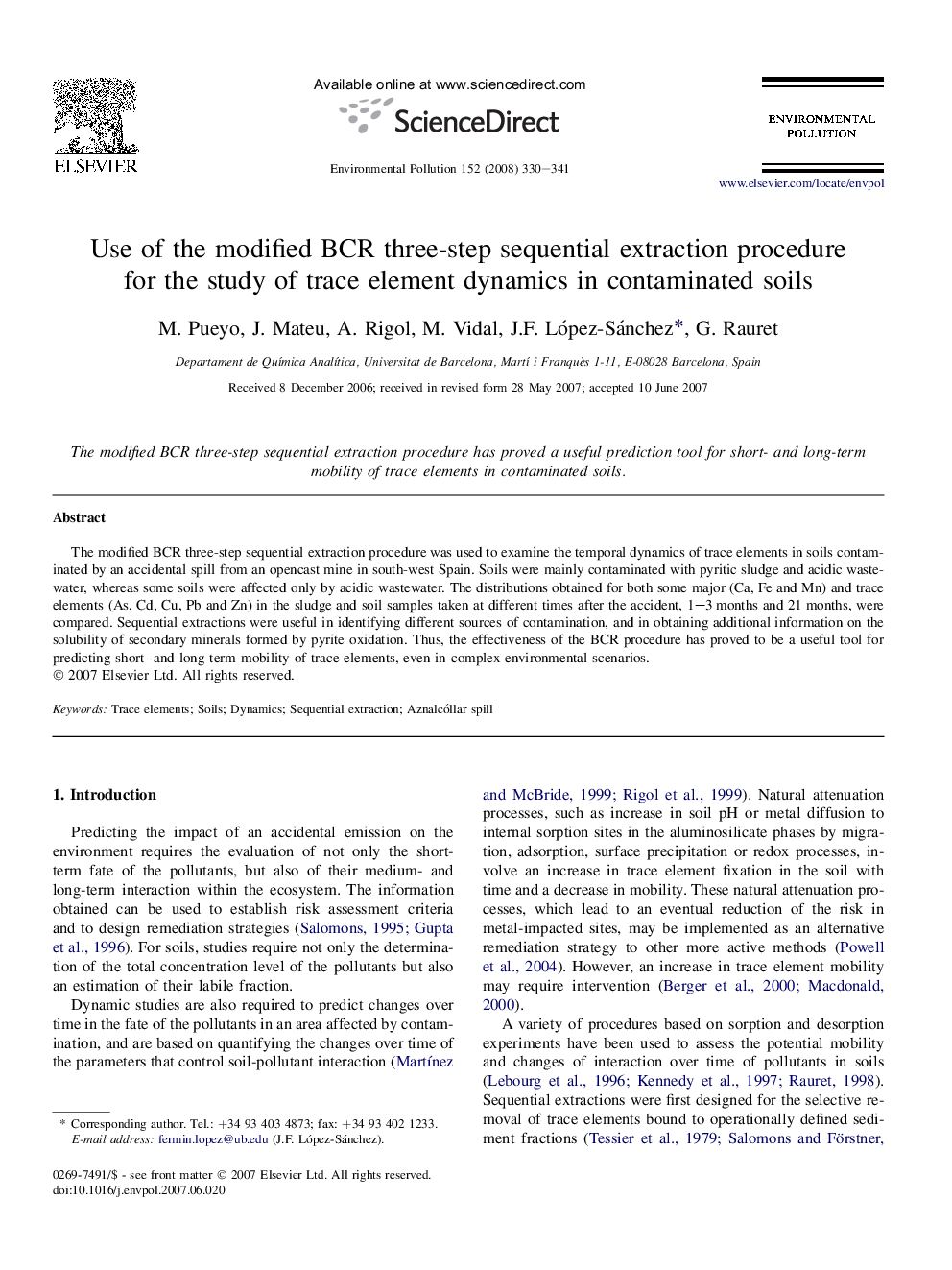| Article ID | Journal | Published Year | Pages | File Type |
|---|---|---|---|---|
| 4427199 | Environmental Pollution | 2008 | 12 Pages |
The modified BCR three-step sequential extraction procedure was used to examine the temporal dynamics of trace elements in soils contaminated by an accidental spill from an opencast mine in south-west Spain. Soils were mainly contaminated with pyritic sludge and acidic wastewater, whereas some soils were affected only by acidic wastewater. The distributions obtained for both some major (Ca, Fe and Mn) and trace elements (As, Cd, Cu, Pb and Zn) in the sludge and soil samples taken at different times after the accident, 1–3 months and 21 months, were compared. Sequential extractions were useful in identifying different sources of contamination, and in obtaining additional information on the solubility of secondary minerals formed by pyrite oxidation. Thus, the effectiveness of the BCR procedure has proved to be a useful tool for predicting short- and long-term mobility of trace elements, even in complex environmental scenarios.
